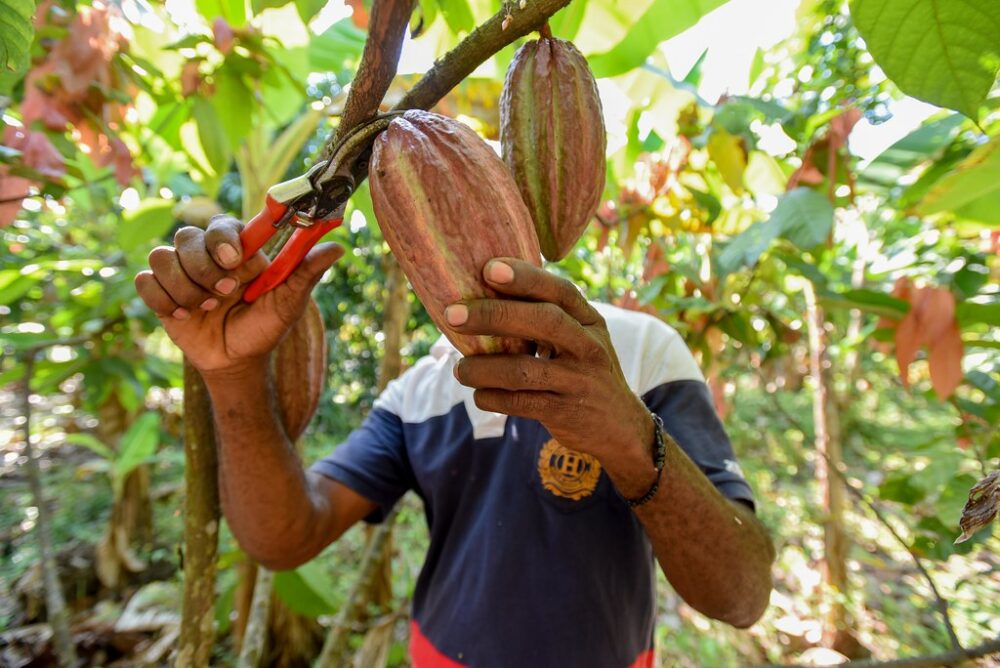A world without chocolate seems impossible, with grocery stores stocking shelf after shelf of products ranging from bars to powder. However, if climate change continues at its current pace, a world without chocolate may become a reality. Even the smallest changes in climate can have serious consequences for the agricultural industry. As global temperatures increase, so does the risk of losing common foods we know and love — chocolate is no exception.
As global temperatures increase, so does the risk of losing common foods we know and love — chocolate is no exception.
Deforestation and the burning of fossil fuels have elevated greenhouse gas concentrations to new highs resulting in a “greenhouse effect,” trapping heat in the Earth’s atmosphere. From the preindustrial period to the present, the planet has warmed an average of 1.41 degrees Celsius. While this may seem minimal, this shift is enough to alter the frequency and severity of extreme weather events like droughts, tropical storms, and flooding. Agriculture at lower latitudes and in the tropics is especially endangered by climate change.
In the age of climate change, one of the biggest problems a farmer can face is drought. Climate change accelerates the water cycle, making droughts set in faster and more intensely. When the atmospheric temperature increases, evaporating water from soil and plants increases as well. This causes a lack of moisture in the soil, therefore heating and drying land at the same time. A study from Brazil in 2016 found that severe drought led to an 89 percent decrease in the production of cocoa, and killed 15 percent of cocoa trees. Crops like cocoa often have low resilience to extreme climate events. Therefore, they are highly sensitive to the environmental effects of climate change. To make matters worse, high temperatures increase the rate of fungal infections for cocoa, further reducing cocoa yield during droughts.
A study from Brazil in 2016 found that severe drought led to an 89 percent decrease in the production of cocoa, and killed 15 percent of cocoa trees.
Droughts and increased infection rates threaten other tropical crops, such as bananas and coffee. One study even suggests that global banana production could entirely disappear by 2050. High temperatures fuel the fungus Pseudocercospora fijiensis, bananas’ biggest enemy. This fungus causes black leaf streak disease, which is capable of wiping out whole banana fields if left untreated. Coffee plants are similarly threatened by disease. The fungus Hemileia vastatrix causes the infamous “leaf rust” leading to mass devastation to coffee farms. Leaf rust is especially catastrophic because it adapts easily to fungicides and spreads rapidly amongst plants.
Rising temperature, intense rainfall, and persistent humidity have turned coffee farms in South America into breeding grounds for infection. Between 2012 and 2017, leaf rust cost nearly $3 billion in lost profits and forced 2 million farmers off their land. The cost of producing bananas and coffee may one day outweigh the profits if climate change worsens. Already, global food prices have risen 31 percent over the past year, according to the Food and Agriculture Organization of the United Nations. Adaptations to climate change are costly for farmers — whether they are changing production or investing in pesticides, resources must be allocated to protecting their livelihoods. Unfortunately, developing countries are most vulnerable to climate change yet are least equipped to mitigate the consequences.
The cost of producing bananas and coffee may one day outweigh the profits if climate change worsens.
Although the future may seem bleak, it is important to remember that humans are stubbornly resilient. There are projects underway for breeding drought-resistant crops, which are more tolerant to rapidly changing temperatures and weather conditions. Novel pesticides could solve the infection problem — fungi and other pests would be less likely to develop resistance to RNA-based pesticides which target specific sequences in an organism’s genome. The push for sustainable business practices is higher than ever before, with more and more companies committing to carbon neutrality or zero waste. Needless to say, as long as there is a demand for chocolate, coffee, and bananas, humans will find a way to deliver.
PLoS ONE (2018). DOI: 10.1371/journal.pone.0200454
Climate Change Reports (2018). DOI: 10.1007/s40641-018-0098-x
Current Opinion in Plant Biology (2020). DOI: 10.1016/j.pbi.2019.12.006
Nature Climate Change (2019). DOI: 10.1038/s41558-019-0559-9







Oh my god. I love chocolate, I can’t believe we might lose it!!! 🙁